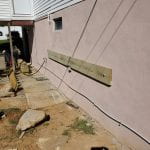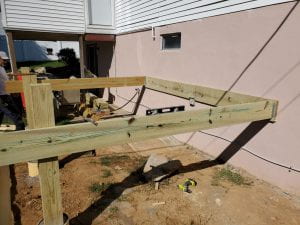Week 4: Sleepovers, sustainability education app, wine, tomato sauce and a deck – a few examples of how we are all designers!
Based on our life experience, skills and interests – below is a description of a design process that is both uniquely ours and effective!
Growing up in a strict family, my siblings and I used to improvise and come up with plans to get what we wanted. Sleepovers at cousins place was something we loved doing but it was an instant “no” if we went straight with the proposal. We used to set up a 2 week plan. My siblings and I first kept track of our parents mood and attentively did our household chores. We made sure we had good unseen exam results ready and waited for the right chance to ask them for permission. I realized that we used to follow a process of-
- Identifying our goal
- Researched on what would make them happy
- Did our best to keep their mood good for an extended period of time and improvised our tactic according to the situation.
- Tried to show them why it’s good for everyone
The reason why the process worked was because it was really personalized. We made and discarded several plans and tweaked it till it was perfect.
The three most important stakeholders for Save Tuba and five UNIQUE attributes for each one of them
- Ministry of Education and Science of the Republic of Kazakhstan- executive body concerned with implementing policies regarding what is taught to kids in grade school; attributes: modernized, willing to adapt new policies in environmental education, want to educate students to be conscientious citizens and aware of their surroundings, patriotic (want to see that their country is flourishing), interested in further incorporating technology into the Kazakh educational system
- Teachers- have an “insider perspective” of grade-school students (the app’s primary demographic), college-educated (understand the importance of teaching kids about the environment and sustainability), readily collaborate with and assist the students in our venture, reside in an urban area (Almaty is the most polluted city in Kazakhstan, so they engage with sustainability initiatives more readily than residents of rural areas, per se), abundant (easy to access and gain their input on our venture)
- Students- eager to learn, dependent on higher authorities in regards to the information they consume, easily influenced, use a great amount of technology on a daily basis
Three ways in which we will validate our Save Tuba concept, technology, usability, and business model
Validation is a continuous process that we are committed to carrying out to ensure that the Save Tuba game app for sustainable education is creating value! Information collected from the various validation activities will provide data to inform app upgrades. Equally important, the validation information will offer guidance if and when we need to pivot to best ensure a successful project. The validation will tell us if what we are doing is destined to work and most important, make an impact.
Concept Validation for utilizing a game app to teach sustainable education:
- Coordinate conversations (interviews) with 2-3 Kazakhstan teachers living in the US
- In partnership with Alma U students, survey teachers/students in Kazakhstan to learn more about interest and willingness to use a game app to teach/learn sustainability and collect feedback on the content
- In partnership with Alma U students, survey building and/or system administrators in Kazakhstan to learn about the feasibility of adopting the game app across their educational system
Technology Validation –
- Determine that students have the necessary technology (phones and access to reliable and readily available broadband internet) via conversations with teachers and parents in small focus groups
- Put the early alpha model in the hands of students, ask them to play with the app and then engage in a virtual conversation along with our Alma U partners to collect end-user feedback on design, special features, and ease to travel from one level to the other. We will repeat this process after we update the app with survey, focus group and alpha testing feedback, giving the students an opportunity to again test the beta version of the app and provide us immediate feedback via a virtual discussion.
- Test the game app’s ability to fully function with a small alpha set of teachers/students, followed by a beta testing of a slightly larger cohort of teachers/students before fully implementing the game app in nearly 20 schools with 7,500 students simultaneously using the app
Usability Validation –
- We will interview early adopters (teachers who helped test the alpha and beta versions) to learn about their user experience and ease with managing the app to help with their instruction
- We will survey students to learn about their user experience and ease with using the app and navigating through the levels
- We will coordinate with Alma U students to conduct a virtual parent focus group to collect feedback on the frequency and ease they observe their children when engaged with the app
- Discuss with administrators anticipated challenges with providing tech-support and app expansion features
- Engage early adopters from the teacher group who use the alpha and beta versions to assist with training teachers recruited for the MVP implementation
Business/Revenue Model Validation –
- Identify and discuss funding partnership opportunities with Kazakhstan businesses and/or organizations; establish a sponsorship relationship that provides the organization with advertisement via the app
- Engage in conversations with educational agencies to request funding for app maintenance, enhancements and support for student/family/teacher IT needs
- Meet with Kazakhstan government officials to establish a funding partnership
- Utilize social media (Instagram/FB) to build relationships with potential sponsors and funding partners
Three examples of something very interesting I learned from a friend…that was a completely alien concept to me!
As naïve as it may sound, I had two separate but interesting lessons about culture from friends that circled around food. One was about wine – a liquid version of food! During high school, I learned a great deal about the Italian culture from my best friend. His parents were first generation migrants to the US from Italy. One of the traditions that they kept is making their own wine. It was via a visit to his home that I learned that the grapes they grew on their property were used to make their own wine…and they crushed the wines with their bare feet (continuing with traditional wine-making tradition).
The second interesting lesson was during my college experience. One day after class, I came home to one of my roommates (also Italian) making homemade tomato sauce from scratch! In addition to the mesmerizing aroma, I learned about the pride his family took in their “secret sauce”.
Finally, I recently learned what it takes to build a deck. Although I have never built anything (like a deck) before, I worked along my brother to add a deck to my house. It was interesting to see engineering, design, and carpentry all come together to yield a great addition to the house. Although it would have been easier to pay a contractor, the experience forced me out of my comfort zone and learn a great deal about construction.







